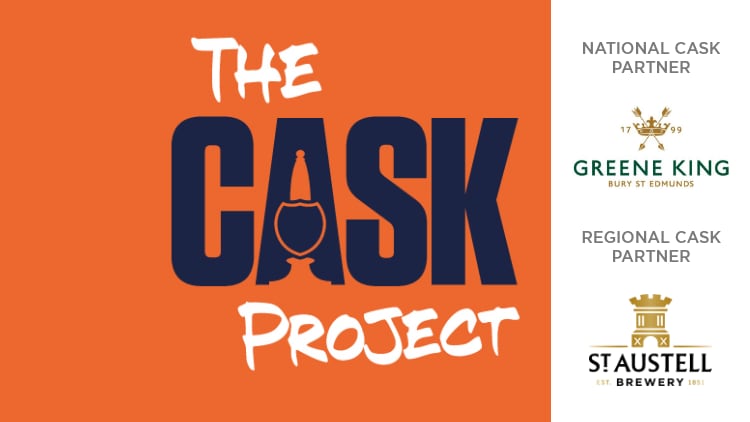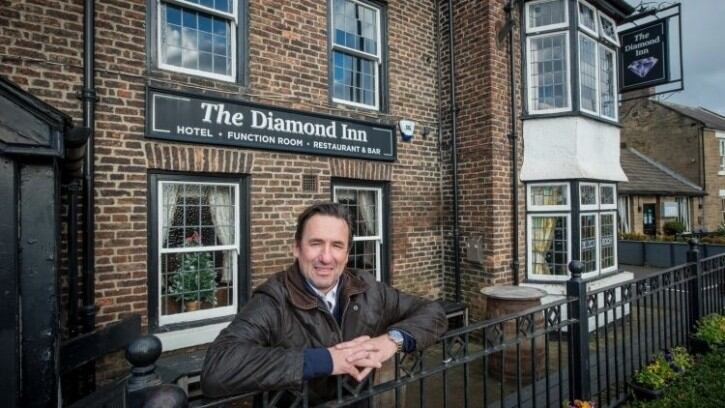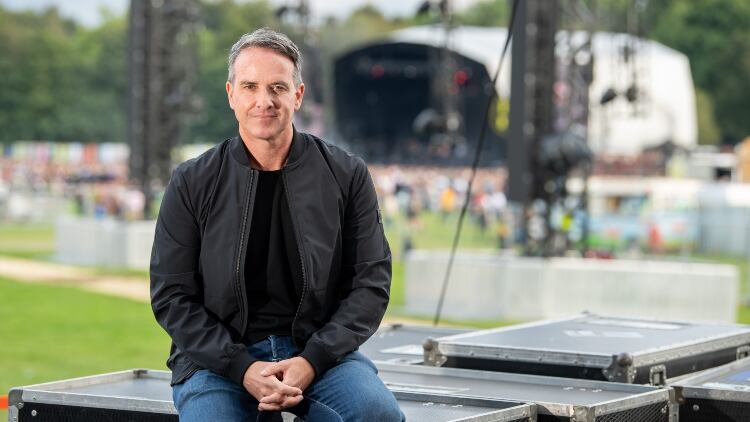That is the opinion of Hook Norton brewery supervisor Andy Thomas who recently reached the final three in an Untapped beer brewing competition through a HIT Training programme.
On quality, the 31-year-old explains: “One thing with Hook Norton is all our pubs are in a 50-mile radius. That means we really do have good control on our cask beer.
“It’s a big thing for us to have that control. We’re always making sure quality can be better. We do cellar courses as well so anybody who works in our pubs goes on a course.
“We also have a strict regime at the brewery where we have our sample room, so we’re always tasting the beer as well. This means we have a ‘fresh’ and ‘mid life’ and the ‘best before’. We’re constantly checking it through its process to make sure there are no issues.
“If we do get a pub that says it is not sure if this beer is right, we can go back to that cask and check it for any issues. So, yes, we are very tight on that.”
He adds the Banbury, Oxfordshire-based brewery tells the licensees and managers of its 30 pubs – and the sites they sell to that are not Hook Norton pubs – if they are not sure about the quality of a beer, tell them so it can be checked first rather than selling a beer that’s “not as good as it should be”.
He says: “We got five stars in pretty much all our pubs for quality control from Cask Marque in the past year.”
Big challenge
Thomas began working for Hook Norton in the barrel shed seven years ago. His job included cleaning cask barrels before he progressed.
He reveals: “I wanted to get into beer and brewing, and wanted to learn more about it, so went from the cask cleaning area and then worked my way up. About three, four years ago, just before Covid, I got the job as brewery supervisor.
“It’s a big challenge because the brewery could have quite easily brought in someone with more experience but they wanted to someone from in-house.”
His job now involves dealing with all the ingredients coming in from across the world. He works with maltsters, Charles Faram on the hops the brewer uses plus all the other contacts and suppliers despite having a brewhouse staff of just five people.
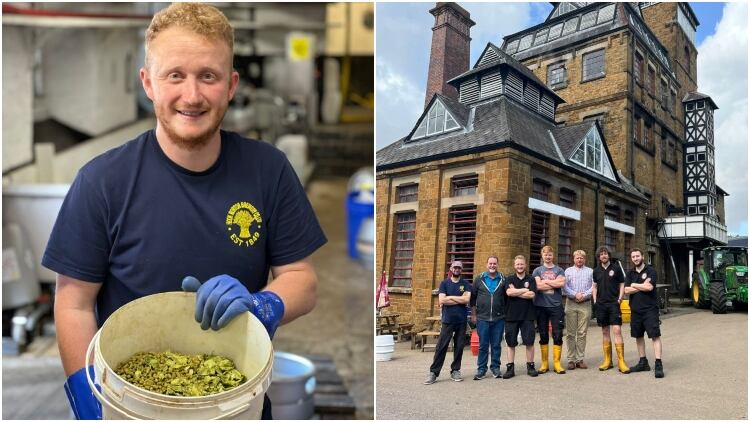
Sure, there’s the less exciting aspects such as paperwork and audits Thomas is also very involved with the brewing side of things including research and development (R&D).
“We’re very lucky Hook Norton are very forthcoming with us and allow us to make new beers and having a play with the pilot brewery,” he says.
Thomas explains how he used the experimental brewing kit to make his own beer for the HIT Training competition.
“I did a bit of R&D down in the pilot plant and, from there, brewed a beer so we’re very lucky in that way.
“We have a lot of free rein, and with the new taxes [that are lower when breweries manufacture beers at 3.4% and below] we think about brewing to those ABV levels a little bit more now.
“We’re not trying to do 6%, 7% and 8% beers as much now, and [the stronger variants] are not really our market, so we’re really playing around with those lower ABVs at the moment.”
Tax bracket
Hook Norton’s flagship beer Hooky is a 3.4% ABV bitter so is in that tax bracket and was already there before the duty rate for certain percentage drinks was introduced.
We do get free reign to do some other beers and it’s not just James [Clarke, Hook Norton managing director] or me who are making the recipes, the boys will come to us and say ‘oh I’ve got this idea, can I give it a go?’ and most of the time it’s a ‘yes, go for it’.
“We have our core seasonals that have been around for a while but with the pilot plant, we do sell these but we don’t really push them out as seasonals.
“If we brew it, we will then sell it in conjunction with our marketing team.
“We also think about the time of year if one of the lads says to us ‘can we brew a stout?’ and it’s middle of August, we’re likely to say ‘let’s hold off and maybe do it later in the year’.”
Yet some of the beers that have started off in the pilot plant – which has a capacity of five brewers’ barrels, which is the equivalent of about 1,440 pints of beer – have ended up going into the “big brewery” and then gone commercial.
Thomas gave a rundown on the HIT Training course that he studied at Nottingham University.
He explains: “You go on an apprenticeship course for 18 months and go through the whole brewing process from raw materials to the finished product. I believe you visit the university six times within those 18 months for two days.
“You will work on a certain aspects when at the university so it might be mashing and then the next one might be brewhouse and then boiling and all through the whole process to beer finishing.
“After the 18 months, you will then you have a test and a walk round of your own brewery where the examiner will give you questions and you have to explain how your brewhouse does it but also how other brewhouses do it and what other equipment you can use and things like that because every brewery is different.
“It’s a great course and I was going to do it before Covid but ended up doing it after the pandemic.”
Great experience
Emanating from this, he received an email from HIT saying it was running an Untapped beer competition where brewers had to put a recipe together and send it back for paper judging.
A panel then looked through all the entries and from there they brought it down to six entries and those six people then had to brew their beer so Thomas did just that at Hook Norton and sent it back.
The final six was soon cut to a final three and Thomas had made the cut and went to The Oval cricket ground in central London where the thoughts of the judges were given and a winner chosen.
Although Thomas did not win, he said “it was a really great experience”.
He states: “I was very shocked. I’m not going to lie. I didn’t expect to go that far into it but I wanted to do this beer, which is called Millhop (5.2% ABV).
“I wanted use just the four ingredients of malt, yeast, water and hops, and I wanted to produce a beer that was quite a traditional English IPA but with a twist so I used a hop called Harlequin, which is an English hop that’s pretty new in the Charles Faram hop breeding programme.
“It came out commercially about three or four years ago and I wanted to promote that a bit because some people would say English hops are not quite of the standards of American hops with the boost in aromas, etc. while I believe if you work with these hops in the right place, you can really get those notes, and I was very happy with it.
“I also wanted to promote it in cask because Hook Norton is predominately cask and I wanted to let people know there’s so many great beers out there in cask and that you can really do whatever you want with cask – if it’s hoppy, it doesn’t have to go into a keg and be cold and fizzy, for example.
“When we brewed it, it did actually go out commercially. We didn’t move it up to the bigger side of the brewery but sold the rest of what I brewed and it sold out. That’s always a good sign when it sells out and I heard some good feedback from a couple of our pubs where it was available to buy.”
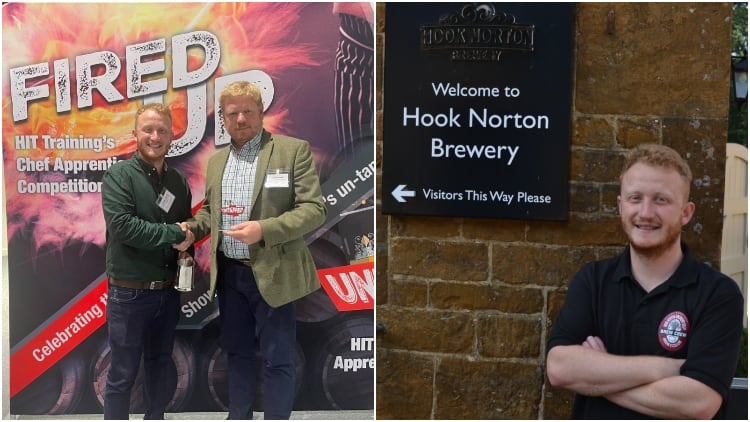
Thomas adds Millhop is likely to come back next year but probably won’t be brewed until “it starts getting a bit ‘summery’ again”.
The split of brewing at Hook Norton, is 60% cask, 10% keg and 30% bottled – most bottles go to supermarkets, some go to pubs and some are even being sent to Australia.
Thomas says: “We are sending a couple of our products to the Czech Republic: our Double Stout (4.8% ABV) and our Old Hooky (4.6% ABV) goes into kegs and then gets sent out to the Czech Republic – that’s been a really nice boost.
“But we’ve seen a 20% drop in cask but we know that’s happening everywhere.”
Try a pin
When quizzed on the quality aspect of cask beer when needing to be sold within a three-day window, Thomas said: “That is the fight at the moment. We have tried to help as much as we can. We bought about 200 pins (4.5-gallon containers) to help pubs. If they are not quite selling a firkin, try a pin.
“A pub knows it has three days with that pin and the next one is stillage and ready to go. It helps when a firkin takes up a lot of space as well.
“If you’re then selling that pin in two or three days that’s great, we’d rather you do that than have a firkin on and try to get four or five days out of it and lose that quality.
“Customers look at the brand, not the pub, if that pint is bad.”
Customers often expect cask beer to be cheaper at the bar but how can that be the case when so much effort goes into it and it is the envy of bars across the world?
Thomas says a brewer should work out the price you charge by gauging your product on how good it is.
He argues: “We’ve seen over the past few years breweries going in there and undercutting [the price of cask] a little bit. It’s making your product not worth what it should be.
“People expect cask to be cheaper, however, Timothy Taylor’s, as an example, is an expensive cask to buy but when it’s good, it’s bloody good – they should charge that price.
“We also charge what we think that beer is worth and most weeks we’re selling 30 to 40 brewers’ barrels of Hooky – that’s quite a lot for cask but people are buying it because they know they’re going to get a good product.
“If that pub doesn’t want to pay that and want to go with somebody cheaper then fair enough, stand your ground and say this is what my product is worth and I’m going to keep it this price. I’m not going to drop it.”
Thomas adds pubs are fighting as hard as any other industry and should, equally, stand firm on a decent price for cask.
“If we went to a pub and they said ‘I’ve just bought this beer for £60 and you’ve got to match it with yours’, in I’d be like, ‘well, no, I’m not going to charge that. If you want to have it, you need to accept our price’,” he says.
“We’re not going to undercut our product because all you do then is more harm down the line for everybody else.”
Relationship is key
The cask argument goes full circle back to quality for Thomas.
He says: “There is that stigma a little bit still to this day with cask such as it’s got to be this or that colour and so on but the main thing is quality. We can talk all day about how it should look but we should be concentrating on quality and that’s what we do here with our whole 50-mile radius thing.
“Getting control of it is the main thing and having that relationship between the brewery and the pub is key. We have our brewers go out with our sales guys and they will have a day in trade. We’re encouraged to go out have a half-pint to check it.
“If the quality isn’t there, we’ll talk to the pub and get it sorted. That doesn’t happen very often but we’re all human and it does happen.”
He believes the cask beer market will decline a little bit more but will plateau and then rise a little bit more again because there will be a trend of it coming back.
“It’s like the whole thing vinyl records – they used to be out of date but they’re coming back again,” he argues.
“I think that will be the same with cask beer. We’ve got all these other breweries doing a bit of cask beer, the ones that predominantly make cans or keg and they’re putting a cask beer on the bar because they know it’s a good product.
“We need the bar staff to talk to customers and try to push cask a bit. If people come in and say ‘what beers have you got?’ Try to push those cask beers.
“If we can get that product to be tasting good for those three days and then taking it off, whether it’s a firkin or a pin. The bottom line is quality and we need to get that back again and kind of fall back in love with it again.”

